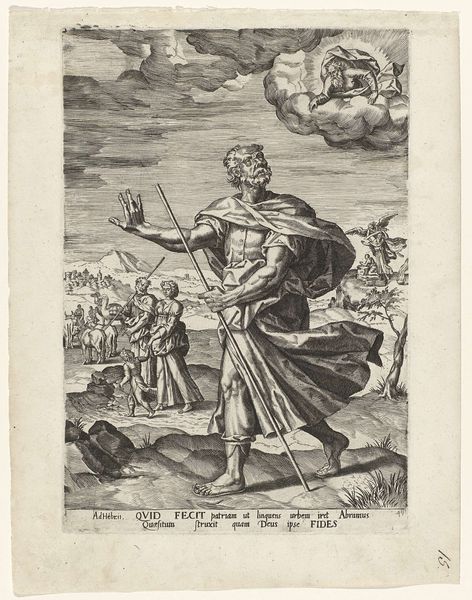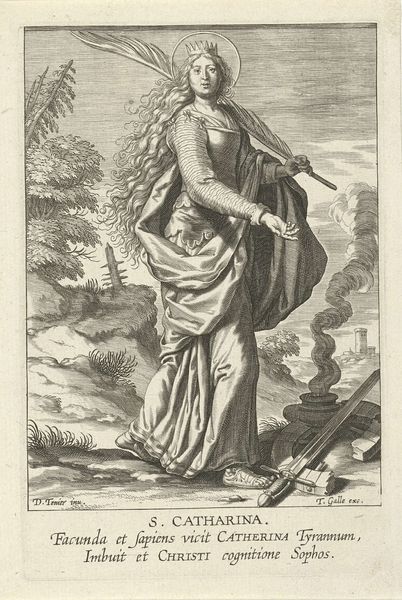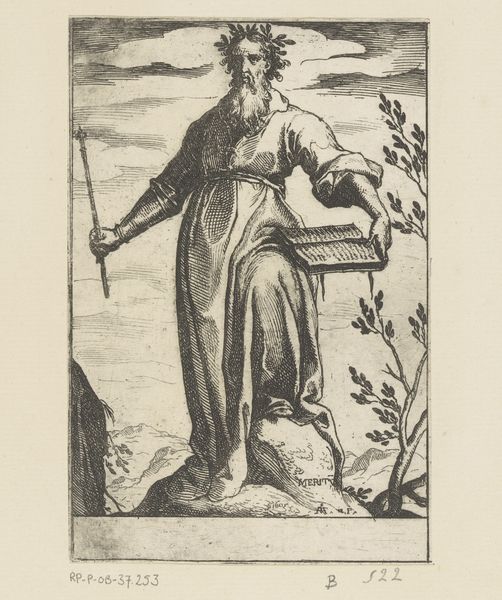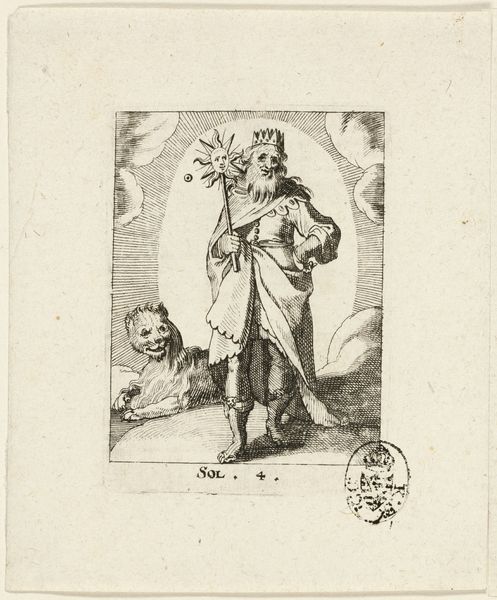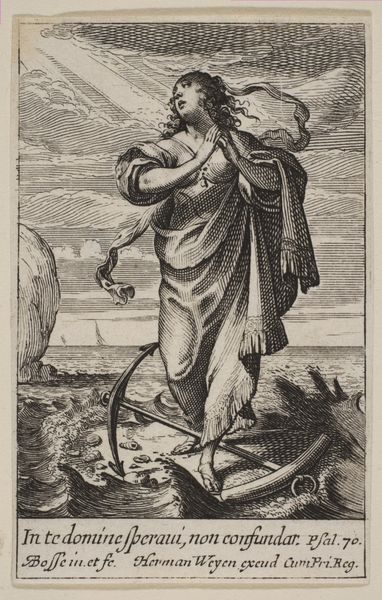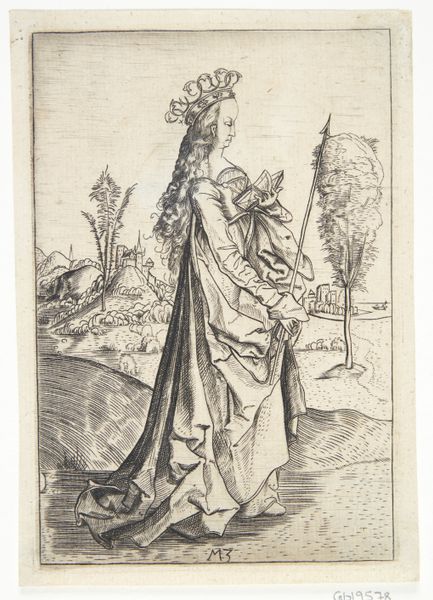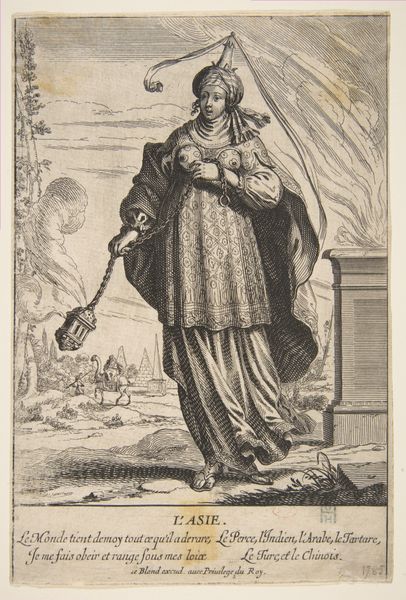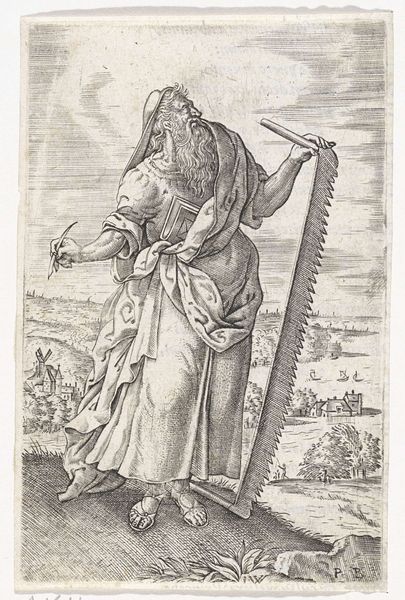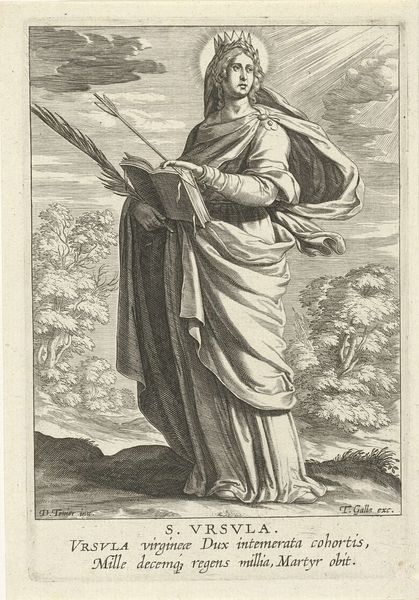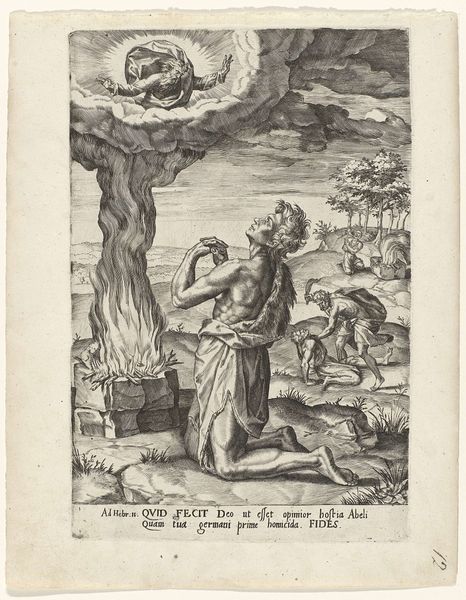
print, engraving
# print
#
pen sketch
#
figuration
#
history-painting
#
academic-art
#
engraving
Dimensions: height 292 mm, width 199 mm
Copyright: Rijks Museum: Open Domain
Editor: Here we have Pieter Jalhea Furnius' engraving, "Moses with the Tablets of the Law," created sometime between 1550 and 1625. It's striking, seeing the textures achieved through the engraving process. The muscular Moses holding those heavy tablets! How do you approach understanding this piece? Curator: Considering this engraving, I'm particularly interested in its materiality. The labor involved in creating these intricate lines with metal tools—the sheer physicality of production—is key. We need to consider who had access to this technology and how it might have shaped the imagery itself. Editor: That’s fascinating. So, instead of just focusing on Moses as a religious figure, we think about the context of its *making*? Curator: Precisely! Look at the use of line: it’s both descriptive and expressive, but also a direct result of the engraver's technique. Furthermore, the distribution of prints like this was dependent on economic structures and trade routes, impacting its accessibility and reach. This makes what may be seen as ‘high art’ intimately linked to networks of labour and distribution. Who was buying it and why? Was it an art object for display or a vehicle to distribute religion and law? Editor: That completely changes my perspective. So it’s less about divine inspiration and more about... access and labor? Curator: It’s both! But understanding the materiality gives us another entry point. We can discuss content by first looking at form and then connecting that to its historical context. How did it circulate, and what social roles did it fulfil beyond being an art object? Editor: I see. Considering the material and how it was disseminated tells a completely different story than just the biblical one. Curator: Exactly. That interaction between materials, meaning and audience transforms this static object into something dynamic, revealing social and economic networks of the era.
Comments
No comments
Be the first to comment and join the conversation on the ultimate creative platform.

